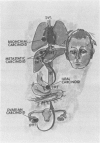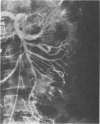Abstract
Although patients with bronchial and ovarian carcinoid tumors can develop the carcinoid syndrome (diarrhea and/or flushing) in the absence of hepatic metastasis, it is believed that development of the carcinoid syndrome in patients with carcinoid tumors of gastrointestinal origin occurs only after the patient has hepatic metastasis. This is explained by hepatic inactivation of most of the serotonin in the portal circulation or by the fact that hepatic metastases are larger than the primary tumor in the gastrointestinal tract. Three patients with ileal and jejunal carcinoid tumors who developed the carcinoid syndrome without obvious hepatic metastasis are described. Two of the patients had intra-abdominal, but extrahepatic, metastasis that probably drained directly into the systemic circulation. The third patient had an ileal carcinoid with clinical involvement limited to adjacent mesenteric lymph nodes. Following resection of her tumor, her urinary 5-HIAA excretion and platelet serotonin level returned to normal, and her attacks of carcinoid flushing virtually ceased. She has occasional spells of "blushing" that are thought to be benign; however, further close follow-up study will be needed to be certain that she is free of disease. It is suggested that each patient with the carcinoid syndrome be evaluated with CT and technetium-99 pertechnetate liver scans. If there is no liver involvement detected with these studies, one should consider hepatic arteriogram or laparotomy to determine if the patient's tumor might be totally resectable.
Full text
PDF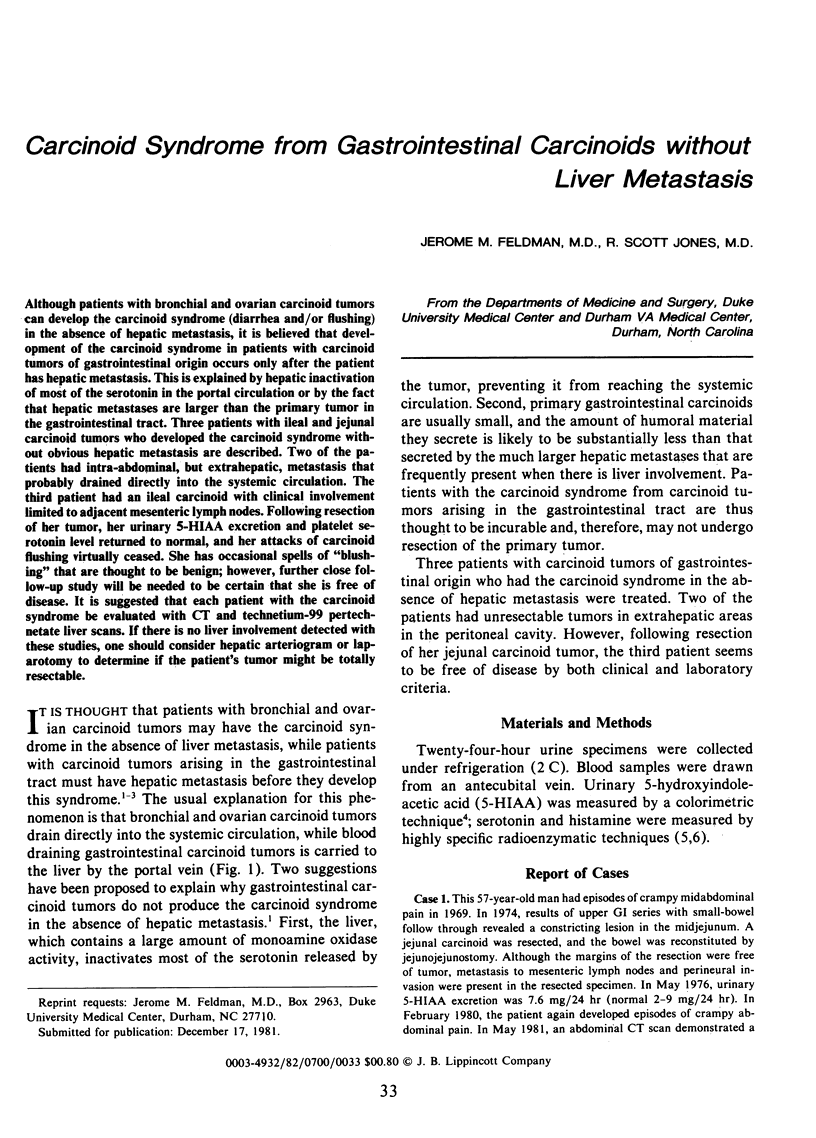
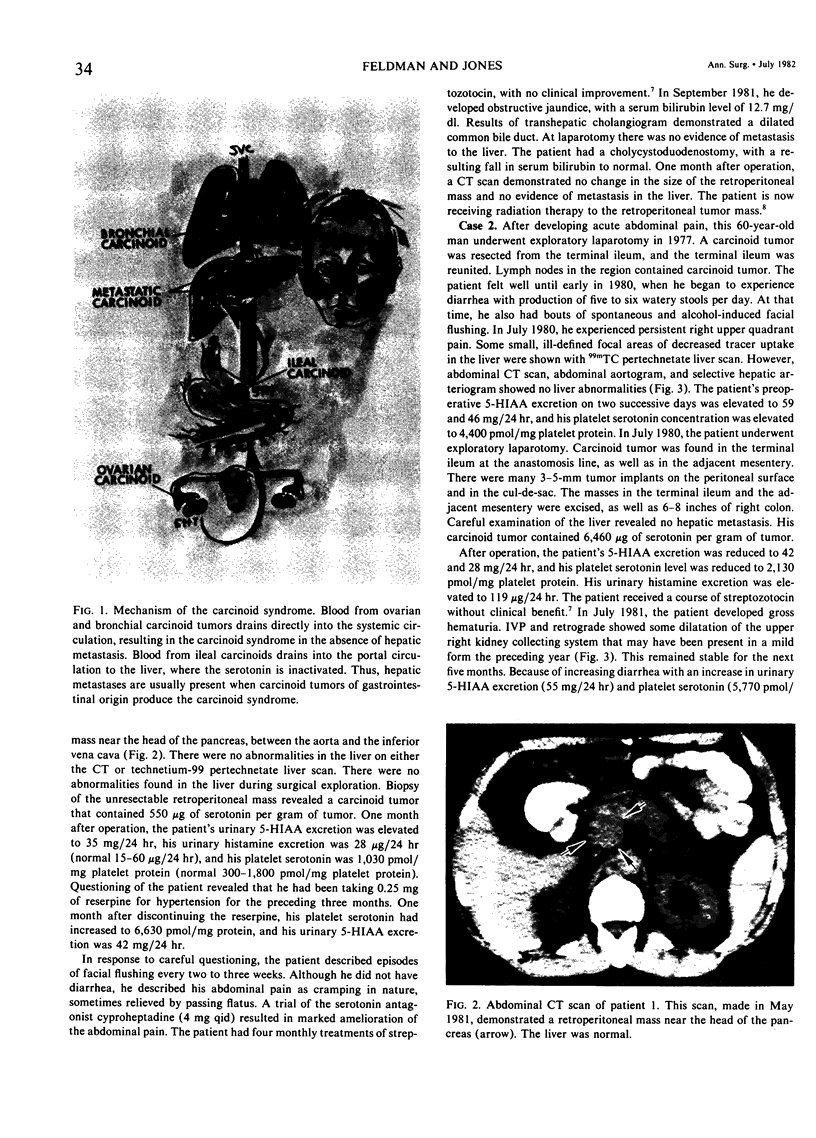
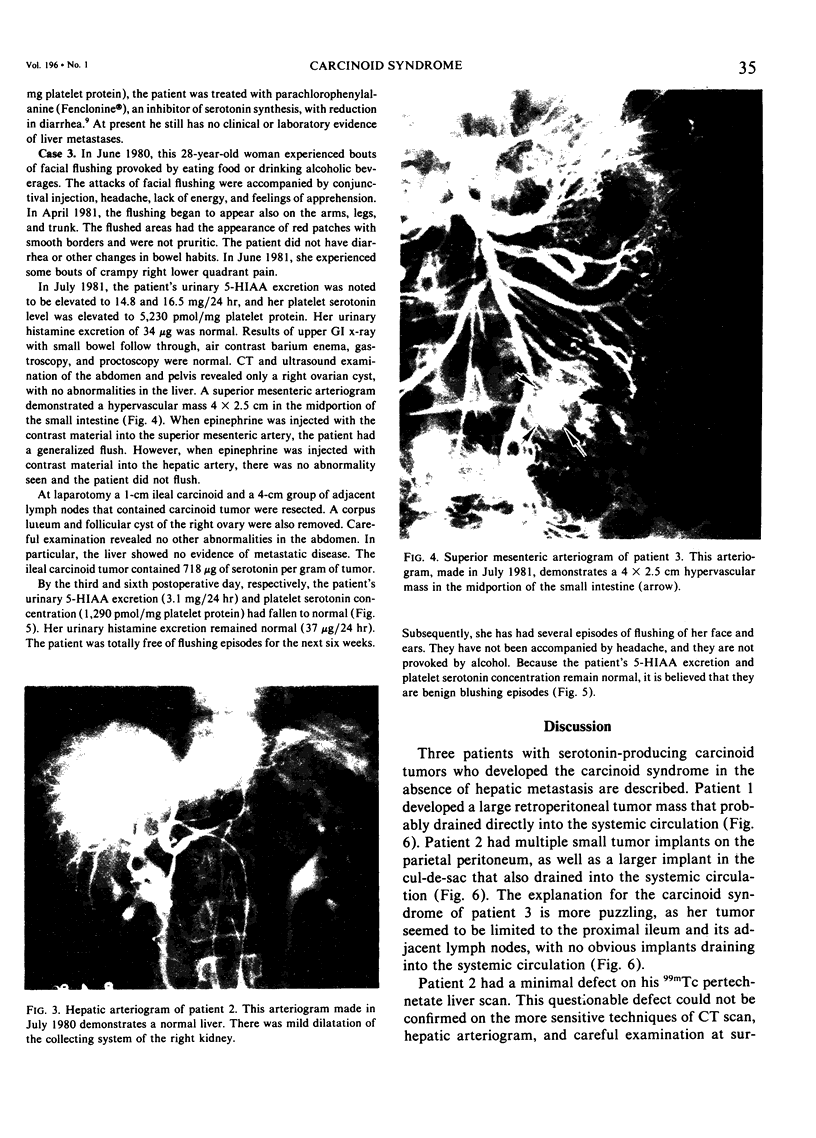

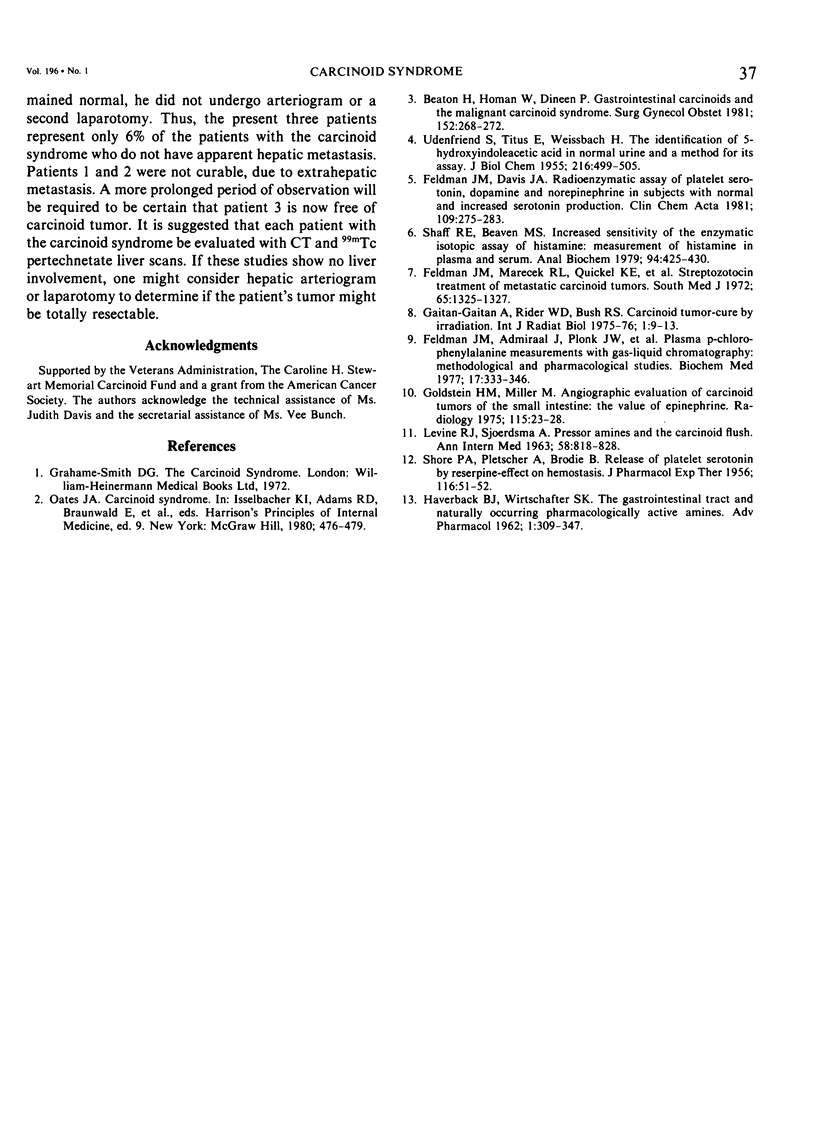
Images in this article
Selected References
These references are in PubMed. This may not be the complete list of references from this article.
- Beaton H., Homan W., Dineen P. Gastrointestinal carcinoids and the malignant carcinoid syndrome. Surg Gynecol Obstet. 1981 Mar;152(3):268–272. [PubMed] [Google Scholar]
- Feldman J. M., Admiraal J., Plonk J. W., Sidbury J. B., Jr Plasma para-chlorophenylalanine measurements with gas-liquid chromatography. Methodological and pharmacological studies. Biochem Med. 1977 Jun;17(3):333–346. doi: 10.1016/0006-2944(77)90039-4. [DOI] [PubMed] [Google Scholar]
- Feldman J. M., Davis J. A. Radioenzymatic assay of platelet serotonin, dopamine and norepinephrine in subjects with normal and increased serotonin production. Clin Chim Acta. 1981 Feb 5;109(3):275–283. doi: 10.1016/0009-8981(81)90313-2. [DOI] [PubMed] [Google Scholar]
- Feldman J. M., Quickel K. E., Jr, Marecek R. L., Lebovitz H. E. Streptozotocin treatment of metastatic carcinoid tumors. South Med J. 1972 Nov;65(11):1325–1327. doi: 10.1097/00007611-197211000-00005. [DOI] [PubMed] [Google Scholar]
- Gaitan-Gaitan A., Rider W. D., Bush R. S. Carcinoid tumor-cure by irradiation. Int J Radiat Oncol Biol Phys. 1975 Oct-Nov;1(1-2):9–13. doi: 10.1016/0360-3016(75)90004-8. [DOI] [PubMed] [Google Scholar]
- Goldstein H. M., Miller M. Angiographic evaluation of carcinoid tumors of the small intestine: the value of epinephrine. Radiology. 1975 Apr;115(1):23–28. doi: 10.1148/115.1.23. [DOI] [PubMed] [Google Scholar]
- LEVINE R. J., SJOERDSMA A. Pressor amines and the carcinoid flush. Ann Intern Med. 1963 May;58:818–828. doi: 10.7326/0003-4819-58-5-818. [DOI] [PubMed] [Google Scholar]
- Shaff R. E., Beaven M. A. Increased sensitivity of the enzymatic isotopic assay of histamine: measurement of histamine in plasma and serum. Anal Biochem. 1979 Apr 15;94(2):425–430. doi: 10.1016/0003-2697(79)90385-3. [DOI] [PubMed] [Google Scholar]
- UDENFRIEND S., TITUS E., WEISSBACH H. The identification of 5-hydroxy-3-indoleacetic acid in normal urine and a method for its assay. J Biol Chem. 1955 Oct;216(2):499–505. [PubMed] [Google Scholar]



